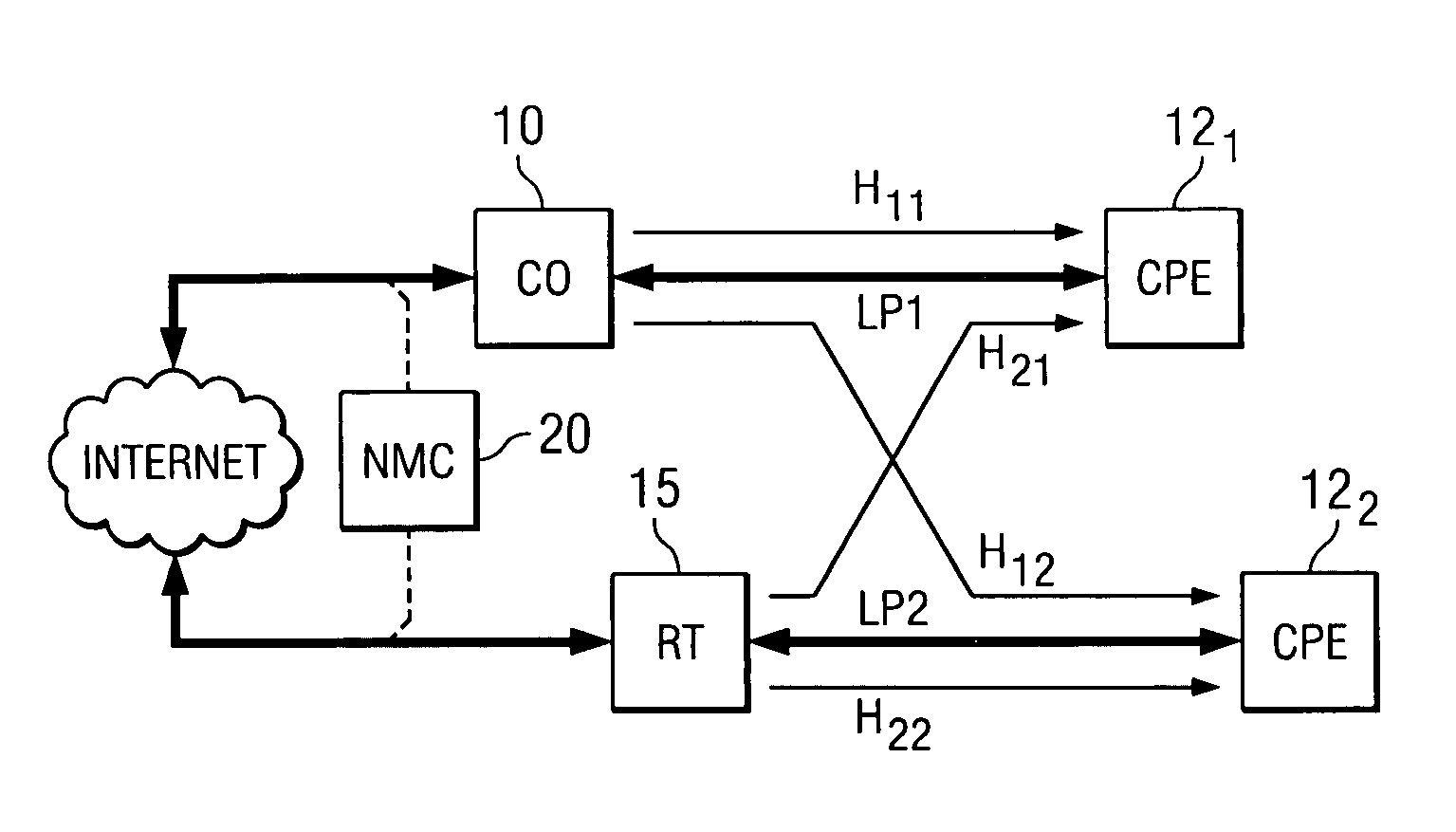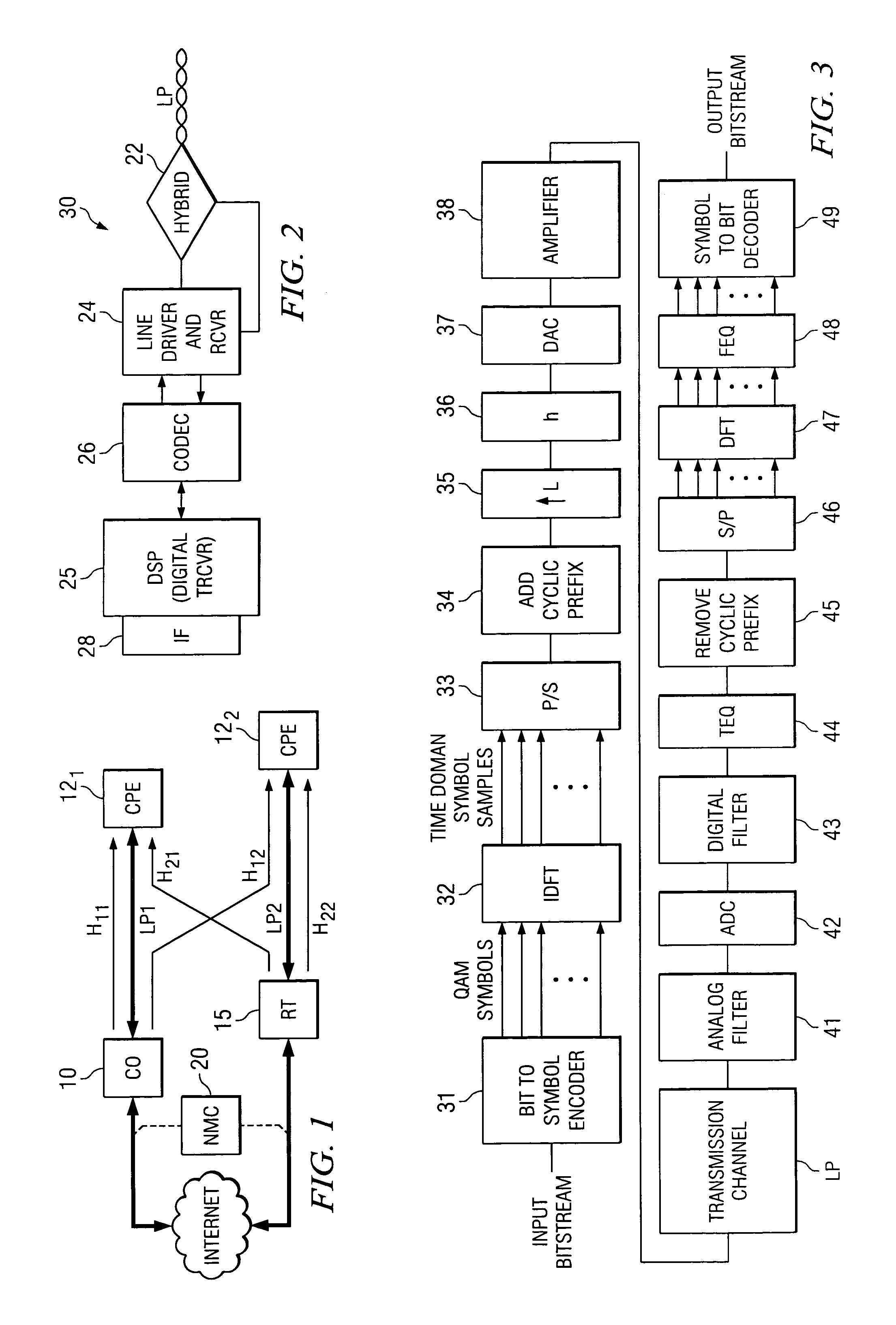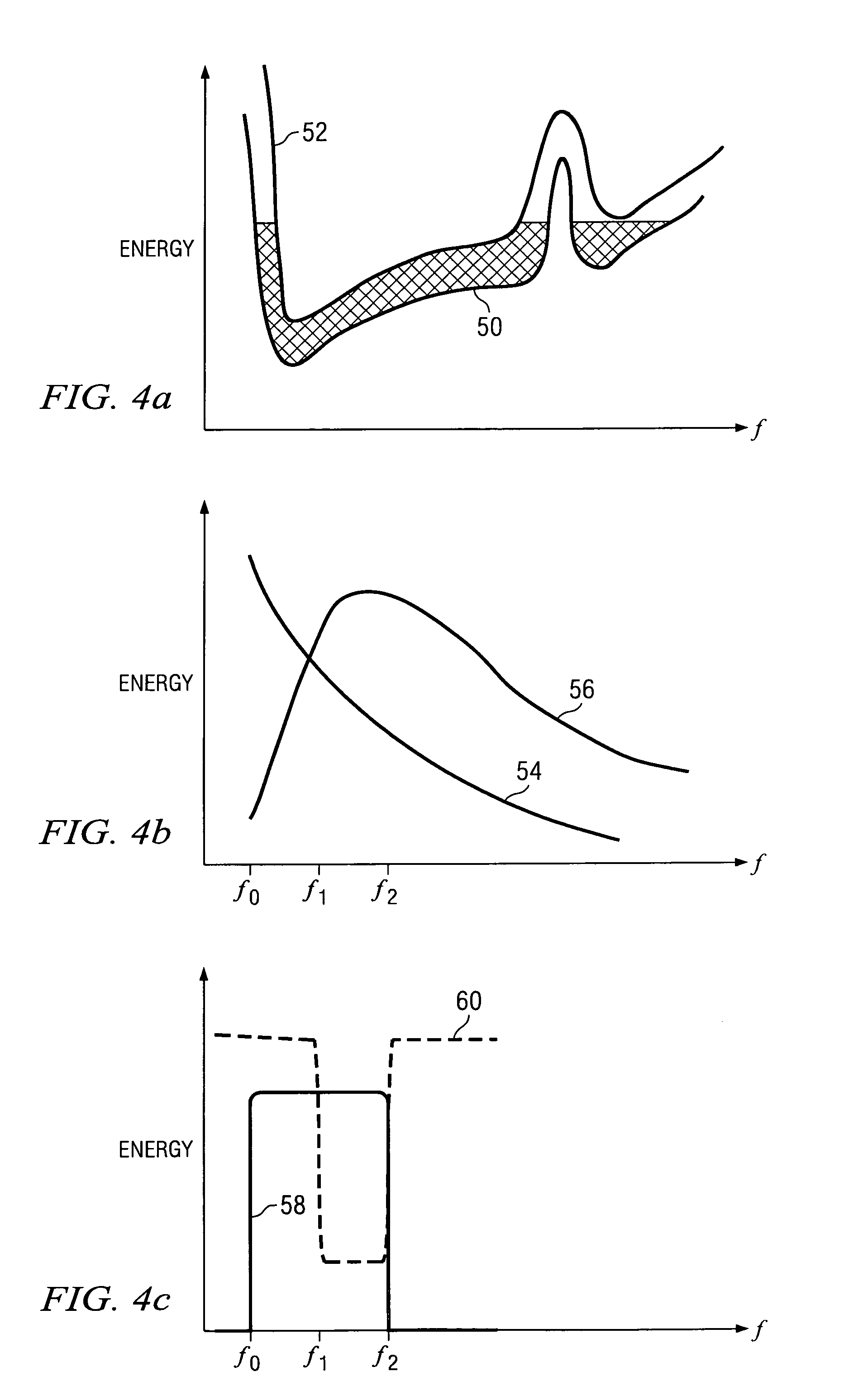Semi-distributed power spectrum control for digital subscriber line communications
a power spectrum control and digital subscriber technology, applied in the field of data communications, can solve the problems of signal crosstalk, power levels for communication over a given subscriber loop are in fact limited, and the so-called “overlapped mode” of operation is not widely deployed, so as to achieve the effect of minimizing communication to and from the central optimizing function
- Summary
- Abstract
- Description
- Claims
- Application Information
AI Technical Summary
Benefits of technology
Problems solved by technology
Method used
Image
Examples
Embodiment Construction
[0027]The present invention will be described in connection with its preferred embodiment, namely as implemented into a multi-user digital subscriber line (DSL) system in which discrete multitone (DMT) modulated communications are carried out between subscribers and a central office (CO), and also between subscribers and remote terminals (RT), such as optical network units (ONUs) or remote digital subscriber line access multiplexers (DSLAMs). However, it is contemplated that this invention may also be applicable to a wide range of other types of networks, especially those in which crosstalk among users is a limitation on data rate. Accordingly, it is to be understood that the following description is provided by way of example only, and is not intended to limit the true scope of this invention as claimed.
[0028]FIG. 1 illustrates an example of a DSL network into which the preferred embodiment of the invention is implemented, illustrating two “users”, or subscriber loops, by way of ex...
PUM
 Login to View More
Login to View More Abstract
Description
Claims
Application Information
 Login to View More
Login to View More - R&D
- Intellectual Property
- Life Sciences
- Materials
- Tech Scout
- Unparalleled Data Quality
- Higher Quality Content
- 60% Fewer Hallucinations
Browse by: Latest US Patents, China's latest patents, Technical Efficacy Thesaurus, Application Domain, Technology Topic, Popular Technical Reports.
© 2025 PatSnap. All rights reserved.Legal|Privacy policy|Modern Slavery Act Transparency Statement|Sitemap|About US| Contact US: help@patsnap.com



